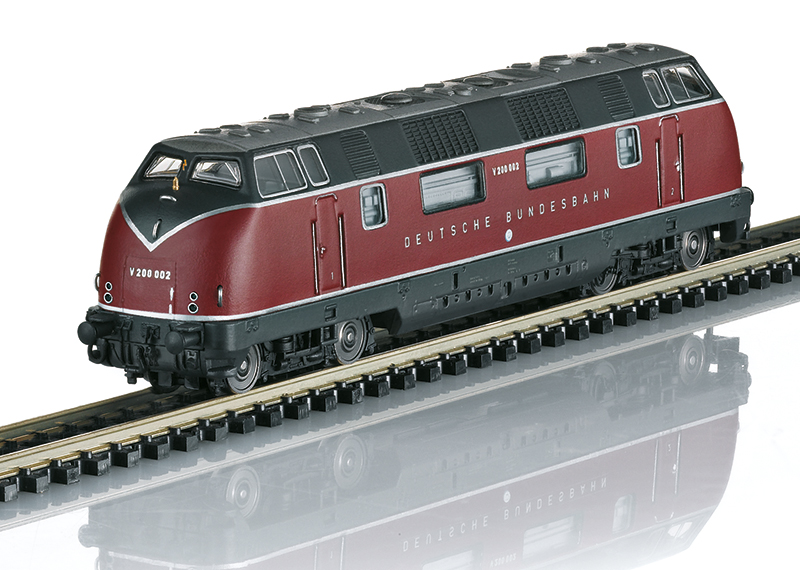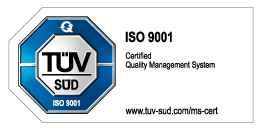Class V 200 Diesel Locomotive
Prototype: German Federal Railroad (DB) heavy diesel hydraulic locomotive, road number V 200 002. General-purpose V 200.0 (preproduction series) in crimson paint scheme as the locomotive looked in the mid-Fifties. Use: Medium and heavy passenger and freight trains.
Most Important Facts
| Article No. | 16225 |
|---|---|
| Gauge / Design type | Minitrix / |
| Era | III |
| Kind | Diesel Locomotives |
Become a club member now! Find Dealer
Highlights
- New tooling
- Warm white LEDs for the lighting
- Cab lighting
- Digital sound with many functions
-
Product description
Model: The frame and body are constructed of die-cast metal. The locomotive has a built-in digital decoder and a sound generator for operation with mfx and DCC. It also has a motor with a flywheel. 4 axles powered. Traction tires. The headlights and red marker lights change over with the direction of travel. Warm white LEDs are used for the headlights. All of these lights and the cab lights can be controlled digitally. The locomotive has a close coupler mechanism. Length over the buffers 115 mm / 4-1/2".
Passenger cars to go with this locomotive are available under item numbers 18259 and 15599.
Spare parts for our articles can be found here in our spare parts search.
One-time series for Trix Club members.
-
Publications
- Special Imprint and Special Products - New items brochure Minitrix 2022 - Main Catalog Minitrix 2022/2023
-
Prototype information
The new German Federal Railroad worked intensively in the Fifties for a replacement for costly steam operation with other forms of motive power. The high cost of comprehensive electrification would have exploded the possibilities at that time. Powerful diesel powered units were thus envisaged for important express train service. The required technology was already available for smaller and medium sized diesel locomotives. Yet in the meantime, the technology for low maintenance and quiet running universal joint shaft propulsion had also been mastered for high performance units. Moreover, Daimler-Benz, MAN, and Maybach in cooperation with the railroad's central office in Munich had designed a new 12-cylinder power unit with 1,100 horsepower performance. Furthermore, Maybach and Voith developed a new hydraulic transmission. From these progressive components, the successful V 200.0 locomotive was developed at Krauss-Maffei with the participation of most of the West German locomotive builders. The two power units of this locomotive had a joint performance of 2,200 horsepower with a service load of about 78 metric tons. A comparable steam locomotive with a tender would have tipped the scales at about 160 metric tons. The proof of the extraordinarily high level of reliability and practical feasibility of this locomotive icon of the Fifties can be seen in the fact that half a century after their acquisition there are several units still in service abroad and on private railroads.
-
Digital Functions
DCC SX2 SX MFX Headlight(s) Locomotive whistle Diesel locomotive op. sounds Whistle for switching maneuver Direct control Sound of squealing brakes off Rear Headlights off Engineer’s cab lighting Front Headlights off Station Announcements Conductor's Whistle Compressor Blower motors Letting off Air Handbrake Special sound function Cab Radio Doors Closing Station Announcements Replenishing fuel Heating equipment Sanding Prelubrication Station Announcements Train announcement Dialog Rail Joints Sound of uncoupling Headlight(s)
Warning
ATTENTION: not for children under 15 years












